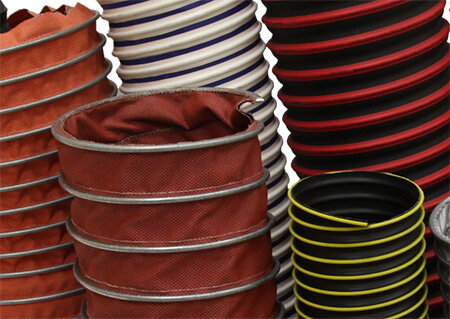Garage Exhaust Hoses: Essential Do's and Don'ts
A garage exhaust hose is one of the most important components for ensuring a safe and healthy work environment for automotive technicians and mechanics. Though often overlooked, these hoses are crucial in removing vehicle gas emissions from repair and maintenance workshops and garages. Exhaust gases, including carbon monoxide, nitrogen oxides, and particulate matter, can pose serious health risks when allowed to accumulate in enclosed spaces.
These exhaust hoses are vulnerable to various types of damage, such as coupling failure, tears, holes, loose fittings, heat degradation, and excessive rubbing against surfaces. When compromised, hoses can release toxic fumes back into the work area, jeopardizing worker health and productivity. Prolonged exposure to exhaust fumes may cause respiratory issues, headaches, dizziness, and long-term health consequences.
Importance of Proper Maintenance
To maximize the lifespan and effectiveness of your garage exhaust hose, as well as minimize health and safety risks, it's essential to follow best practices for maintenance. By adhering to proper care guidelines, you can ensure that your exhaust system remains in optimal working condition, promoting a safer and more productive environment for everyone in your automotive facility.

 WARNING: Vehicle Exhaust is extremely dangerous and potentially deadly. We always recommend that any system be properly engineered to meet the specifications of your application. If you are using our Crushproof system, we recommend that you use it with a fan and as an intermittent repair solution only, not to be run for long periods of time. This hose is to be used only with naturally aspirated 4 cycle engines running at an idle and under no load. We recommend keeping any run of hose as short as possible preferably 11' or under and sized to include ambient air to cool the exhaust temperatures. This hose is designed to handle frequent temperatures up to 400° and intermittent temperatures to 600°. When using Crushproof hose for the first time, watch closely to verify that the exhaust is exiting the building as designed. IF YOU SEE ANY EXHAUST COMING BACK INTO THE SPACE, THE HOSE IS NOT BEING USED PROPERLY. TURN THE VEHICLE OFF IMMEDIATELY AND CALL OUR EXPERTS.
WARNING: Vehicle Exhaust is extremely dangerous and potentially deadly. We always recommend that any system be properly engineered to meet the specifications of your application. If you are using our Crushproof system, we recommend that you use it with a fan and as an intermittent repair solution only, not to be run for long periods of time. This hose is to be used only with naturally aspirated 4 cycle engines running at an idle and under no load. We recommend keeping any run of hose as short as possible preferably 11' or under and sized to include ambient air to cool the exhaust temperatures. This hose is designed to handle frequent temperatures up to 400° and intermittent temperatures to 600°. When using Crushproof hose for the first time, watch closely to verify that the exhaust is exiting the building as designed. IF YOU SEE ANY EXHAUST COMING BACK INTO THE SPACE, THE HOSE IS NOT BEING USED PROPERLY. TURN THE VEHICLE OFF IMMEDIATELY AND CALL OUR EXPERTS.